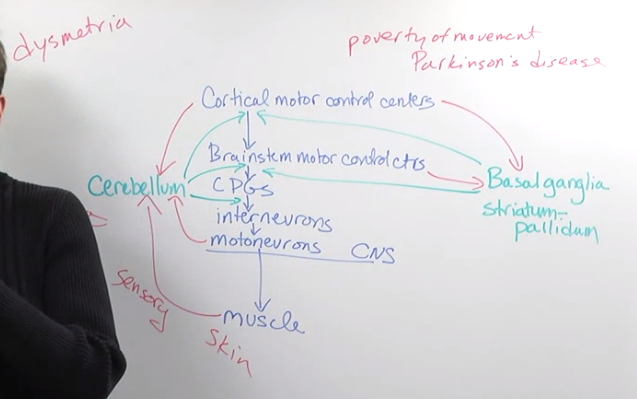The Importance of the Motor Hierarchy:
- The motor hierarchy is a crucial system for generating movement.
- Damage anywhere in this hierarchy will result in movement deficits.
Limitations of the Motor Hierarchy:
- The motor hierarchy alone cannot produce the refined movements we’re accustomed to.
- Movements would be imprecise without additional modulation.
Modulation by the Cerebellum:
- The cerebellum acts like an orchestral conductor, ensuring smooth coordination between muscles and joints.
- It receives sensory input (muscle, skin) and motor intention signals.
- It compares intention with actual movement and adjusts the motor hierarchy accordingly.
- Cerebellar damage leads to ataxia:
- Dysmetria: inaccurate distance control (overshooting the target)
- Decomposition of movement: jerky motions instead of smooth flow
Modulation by the Basal Ganglia:
- The basal ganglia influence a higher level of movement control compared to the cerebellum.
- It focuses on action selection: deciding whether or not to initiate movement.
- Our natural state is to not move, and the basal ganglia help overcome this inertia.
- Basal ganglia dysfunction manifests differently:
- Parkinson’s disease (poverty of movement): difficulty initiating and executing movements.
- Hyperkinetic disorders (excess movement): involuntary movements like chorea or ballismus.
- These conditions reflect an imbalance between initiating a chosen movement and suppressing others.
Conclusion:
- The motor hierarchy provides the foundation for movement.
- The cerebellum and basal ganglia modulate this system for smooth, coordinated actions and appropriate movement selection.
Further Exploration:
- The lecture will delve deeper into motor neurons and muscle types in the next unit.
